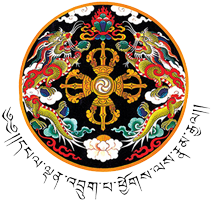Thimphu Tshechu
The Thimphu Tshechu is the largest and most vibrant religious festival held annually in Bhutan’s capital city, Thimphu. Celebrated over several days, usually in the autumn month of September or October, the festival honors Guru Rinpoche (Padmasambhava), the revered saint who brought Buddhism to Bhutan in the 8th century.
Held in the grounds of Tashichho Dzong, the Tshechu is a spectacular showcase of Bhutanese culture and spirituality. It features elaborate masked dances (cham) performed by monks and lay dancers dressed in colorful costumes and traditional masks, depicting stories of Buddhist teachings, legends, and moral lessons. These dances are believed to bring blessings, protect the community from evil, and purify sins.
Apart from the spiritual rituals, the festival is a social gathering where Bhutanese people from all over the country come to reconnect, wear their finest traditional dress (kira and gho), and enjoy food, music, and camaraderie. Visitors get a rare glimpse into Bhutan’s rich heritage, vibrant traditions, and deep-rooted religious devotion.
The Thimphu Tshechu is more than a festival — it is a living celebration of Bhutan’s identity, faith, and unity, attracting both locals and tourists who seek an authentic cultural experience.
The Thimphu Tshechu usually starts in late September or early October and lasts for 3 to 5 days, depending on the Bhutanese lunar calendar each year. The exact dates vary annually because the festival follows the Bhutanese lunar calendar, which is based on the Tibetan lunar system.
Typically, the festival begins on the 10th day of the lunar month of the Bhutanese calendar, and ends on the 14th day (sometimes 13th or 15th depending on the year).
Contact us
- Dzongkhag Administration Thimphu, Bhutan
- Dzong Post Box No: 168
- Phone No:02334997
- E-Mail: helpdesk@thimphu.gov.bt
Quick Links
Our Location
Copyright © 2025 - Thimphu Dzongkhag
